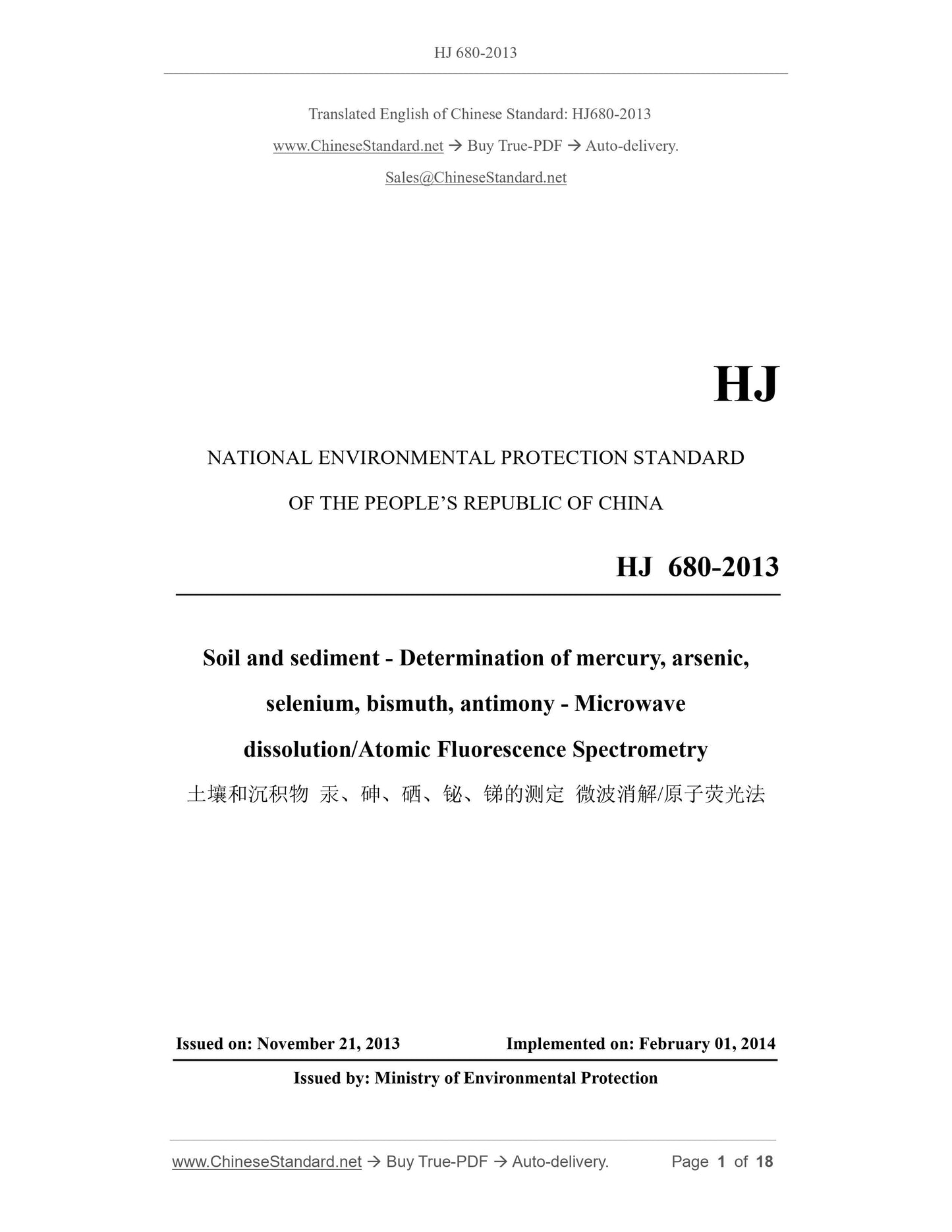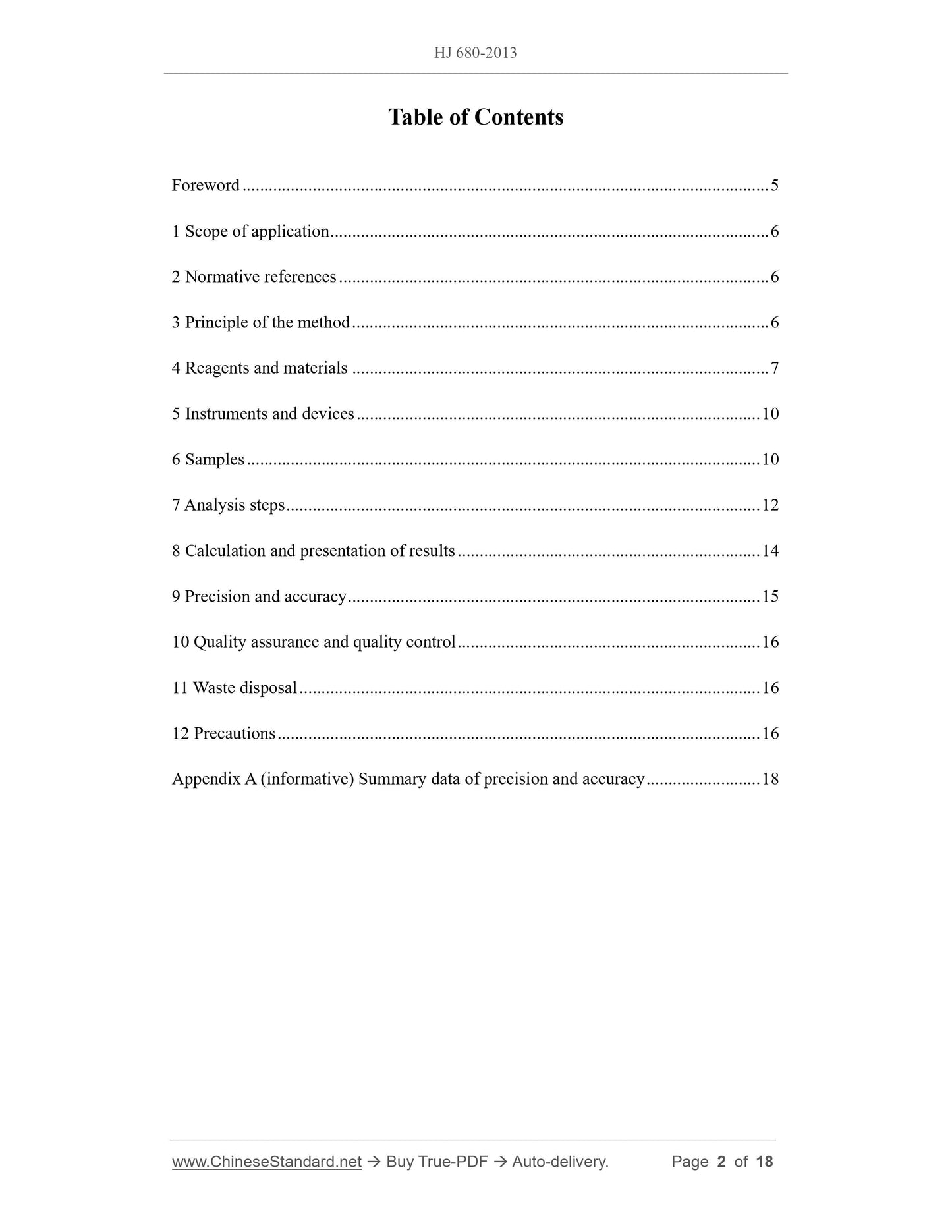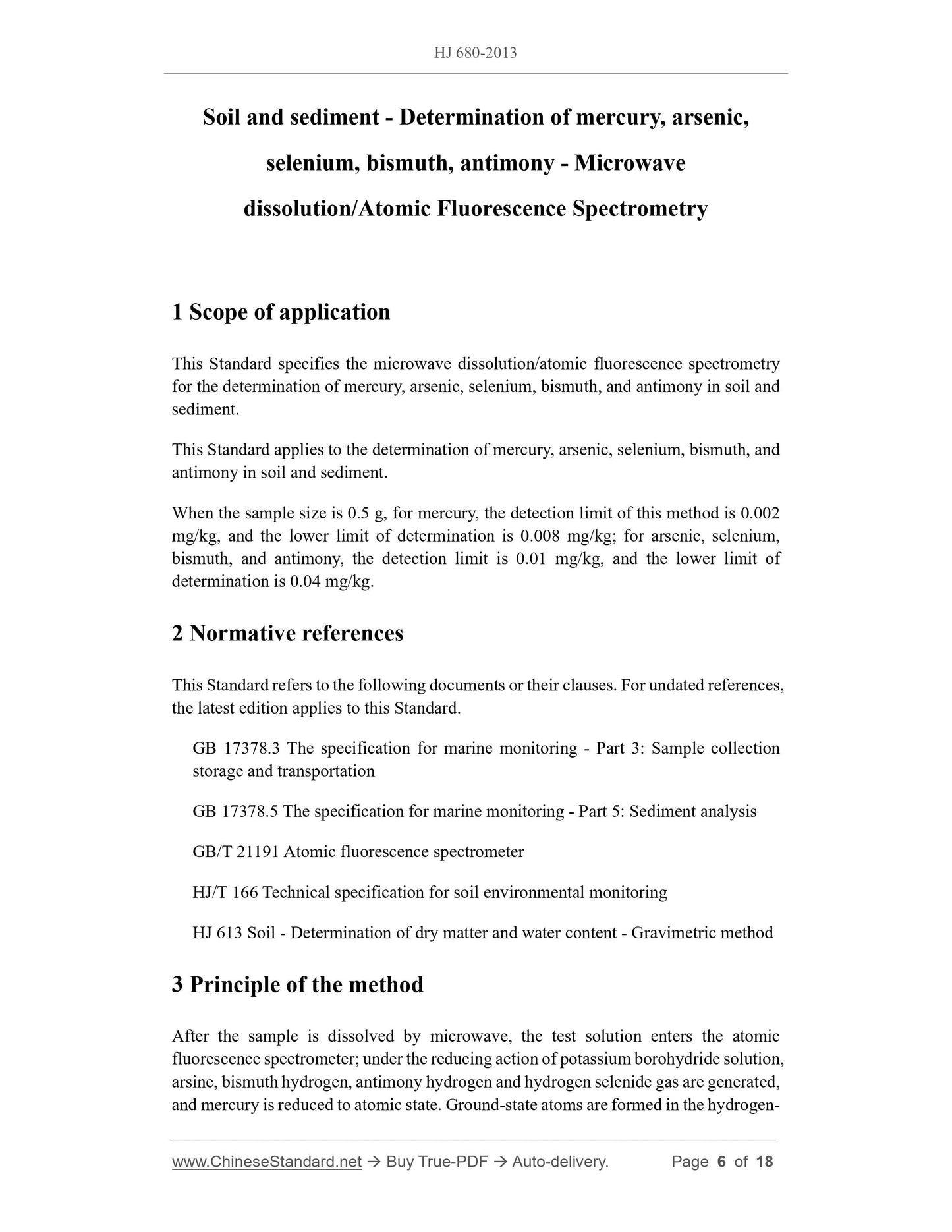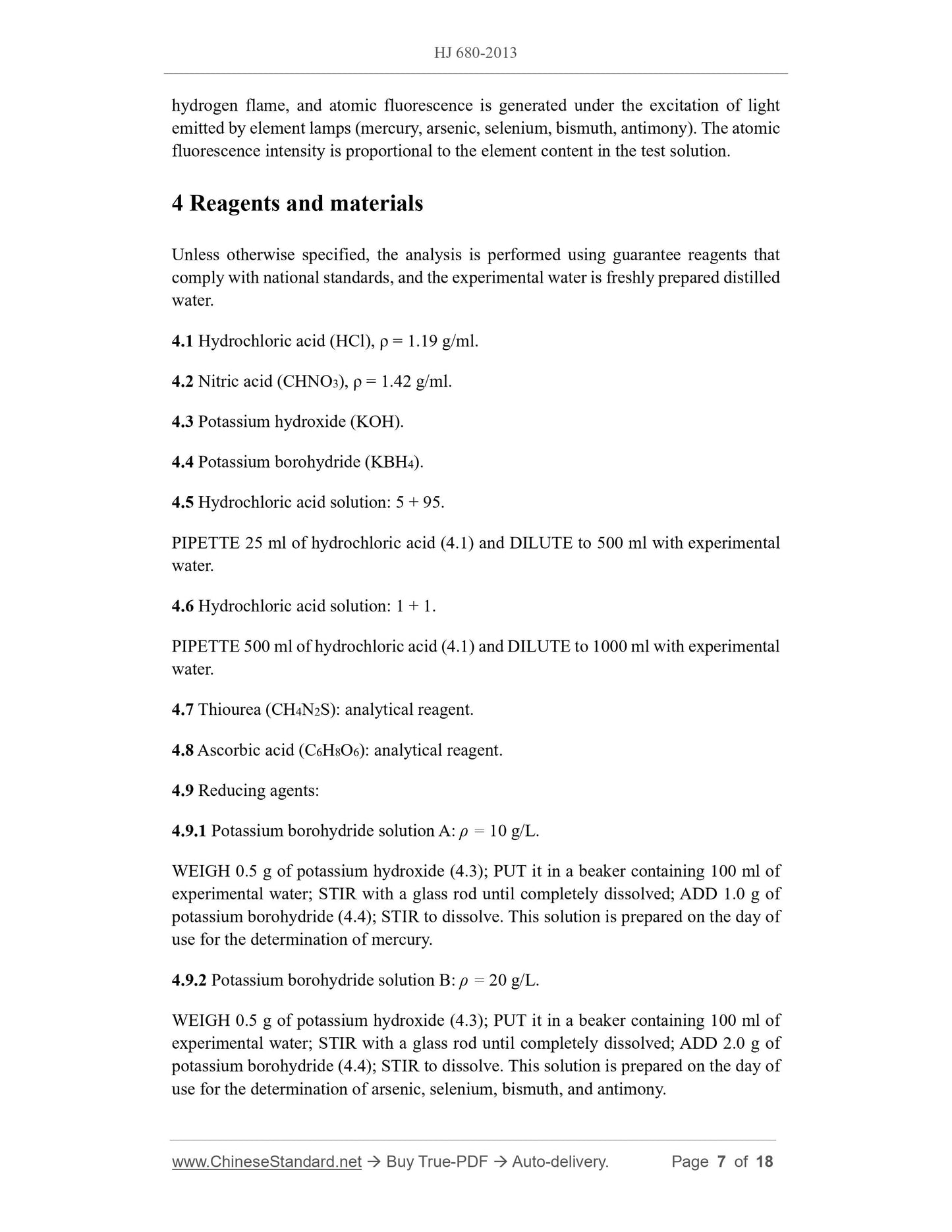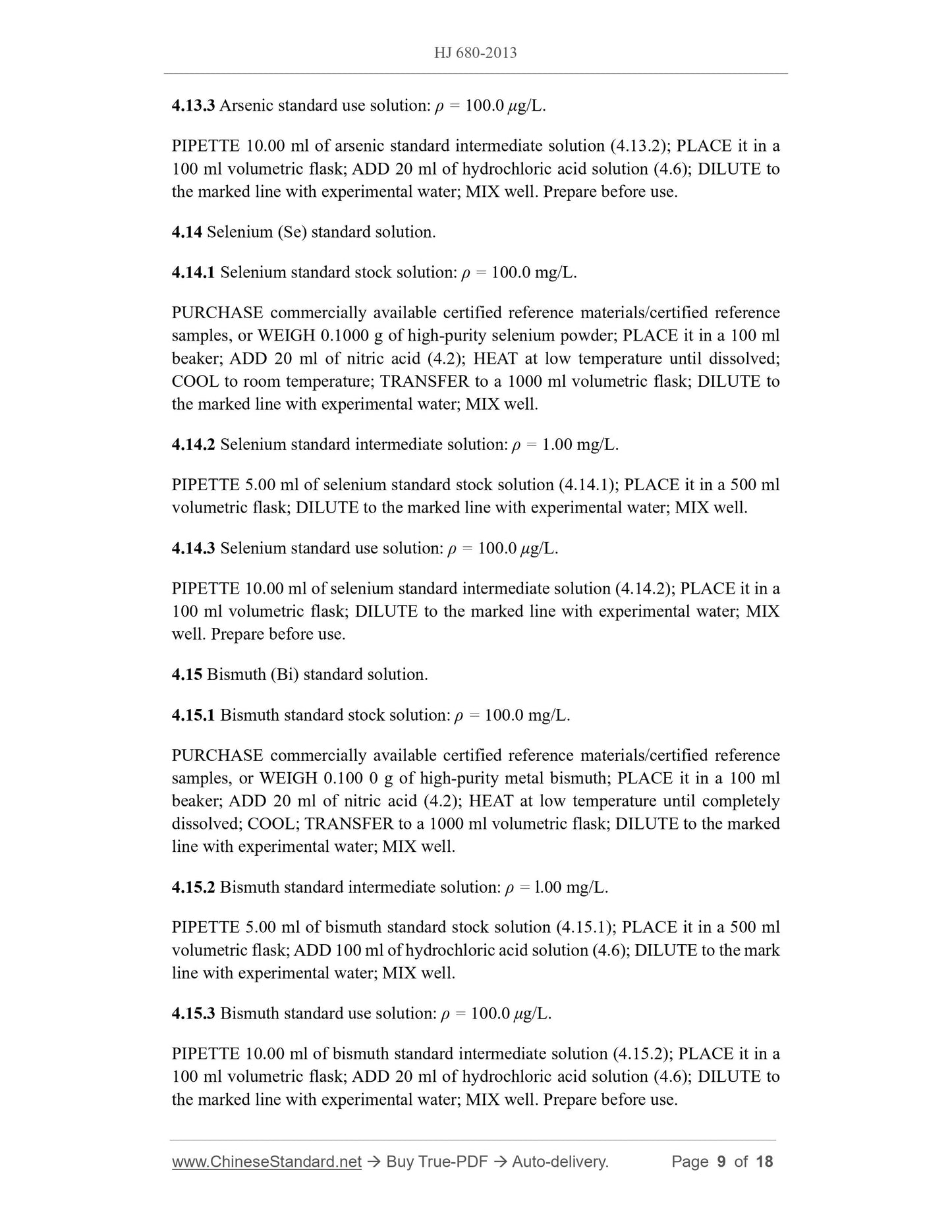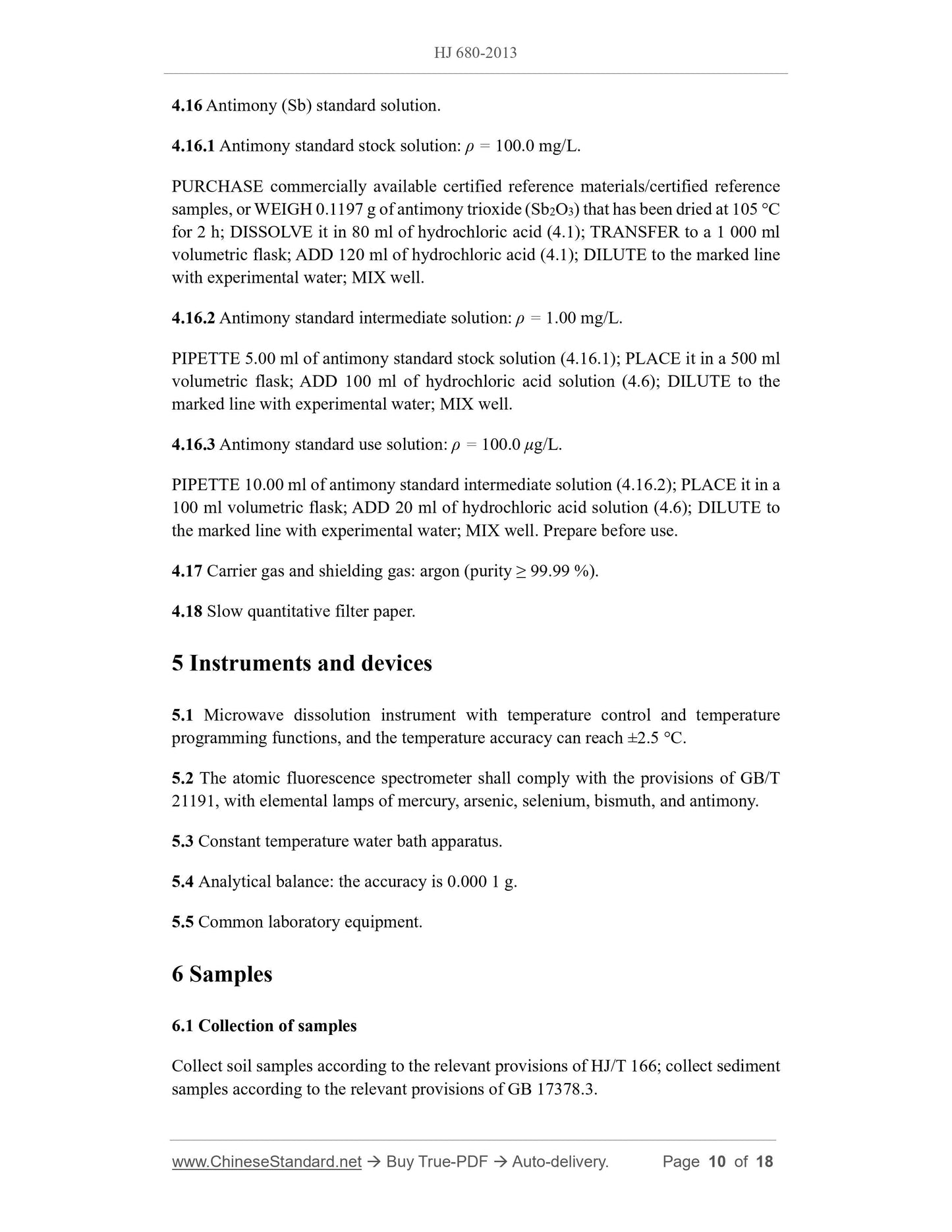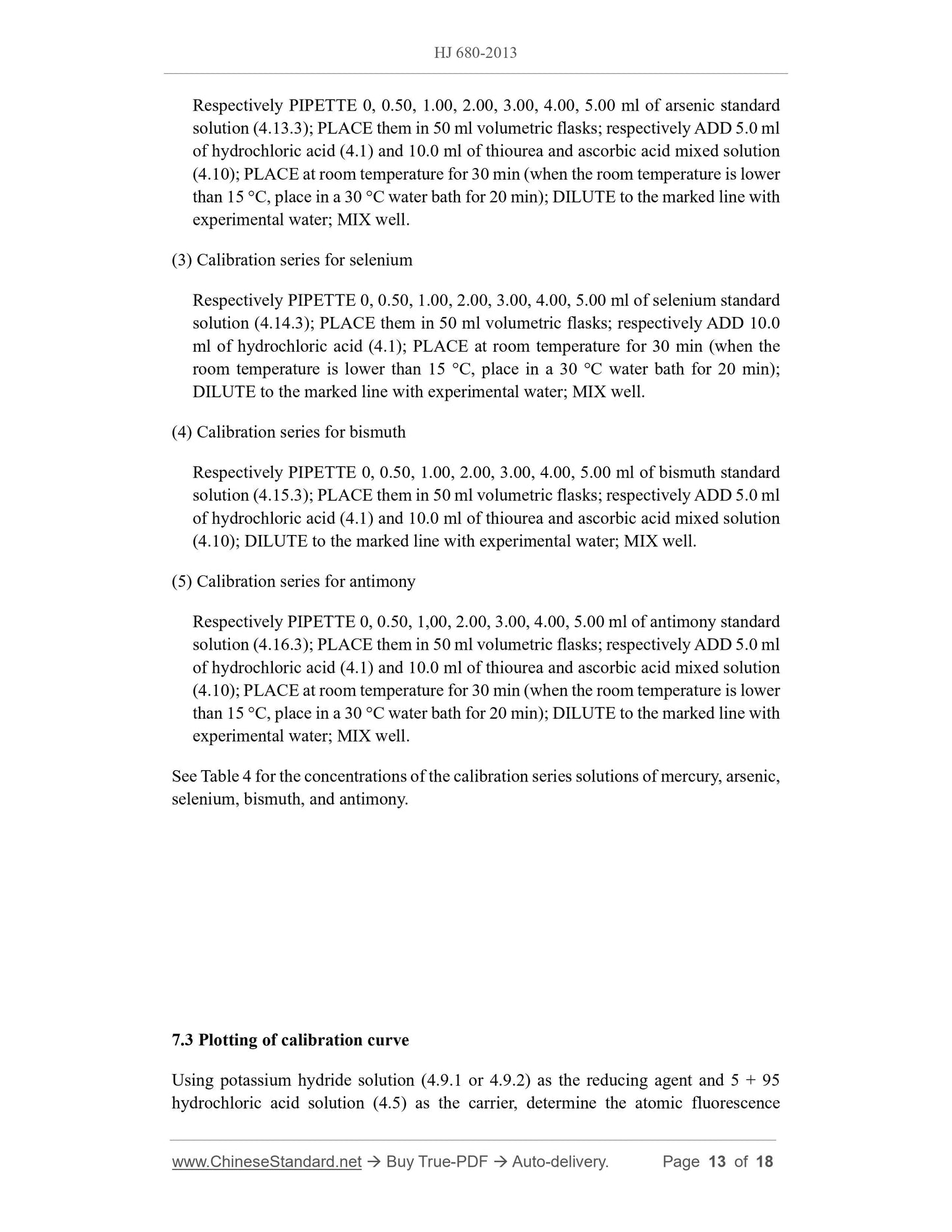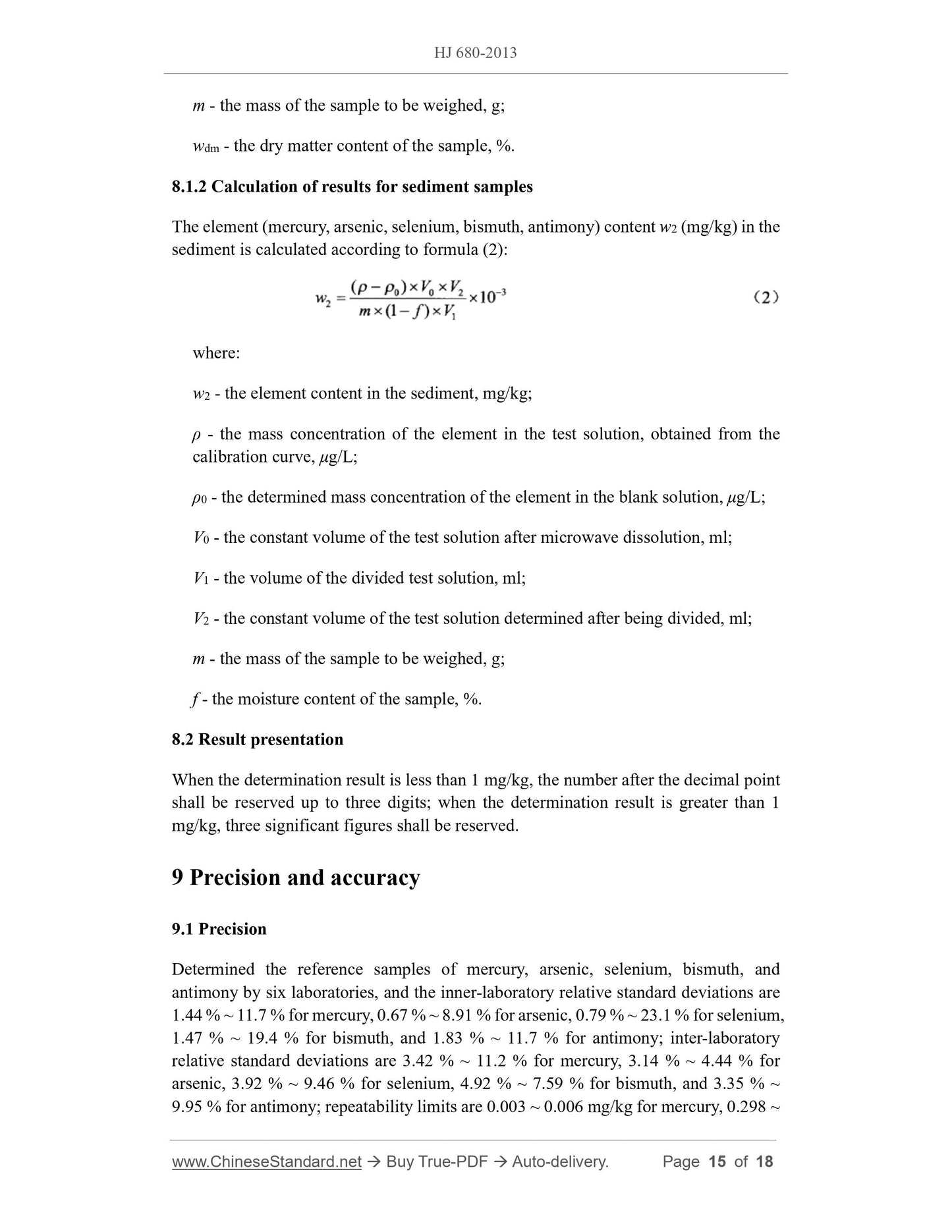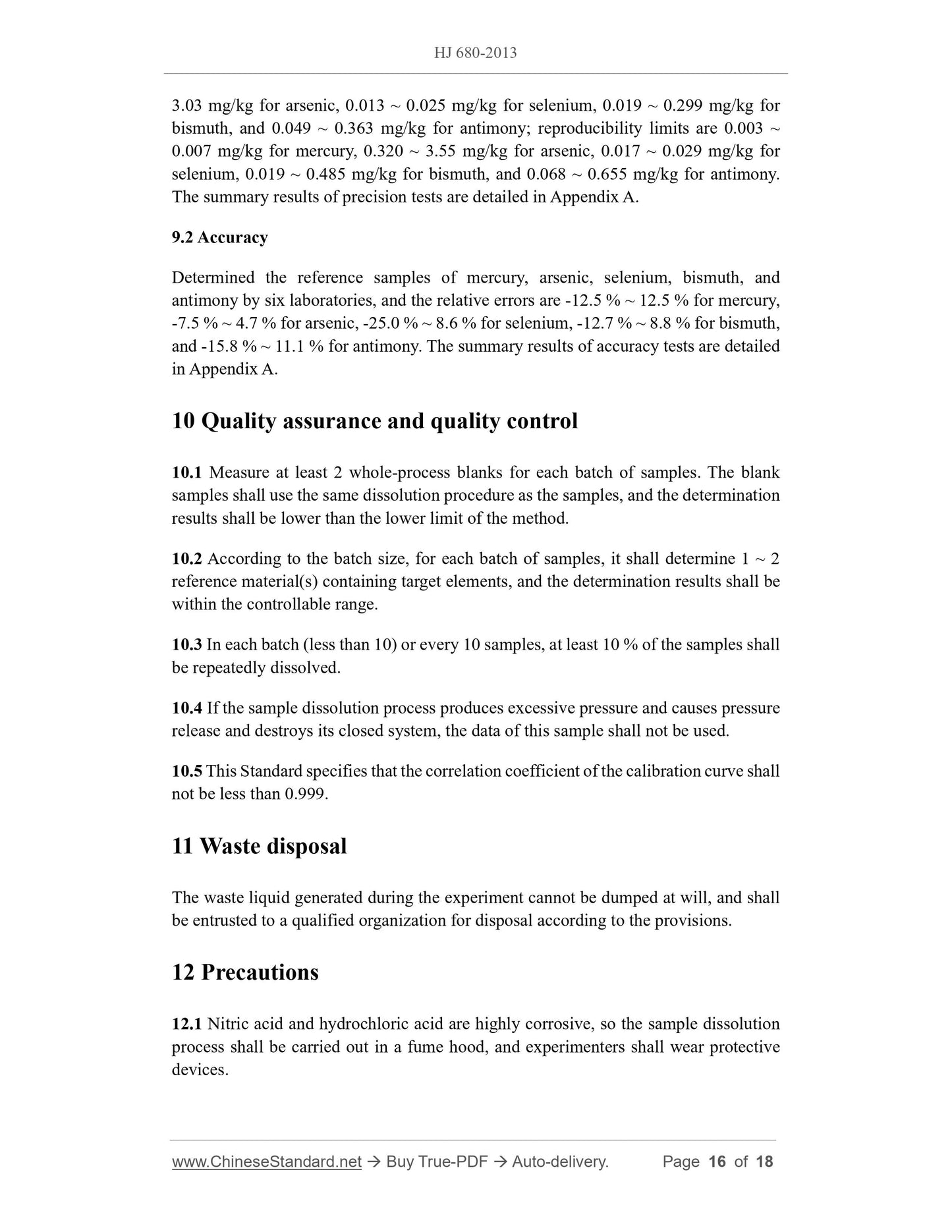1
/
of
9
www.ChineseStandard.us -- Field Test Asia Pte. Ltd.
HJ 680-2013 English PDF
HJ 680-2013 English PDF
Regular price
$330.00
Regular price
Sale price
$330.00
Unit price
/
per
Shipping calculated at checkout.
Couldn't load pickup availability
HJ 680-2013: Soil and sediment - Determination of mercury, arsenic, selenium, bismuth, antimony - Microwave dissolution/Atomic Fluorescence Spectrometry
Delivery: 9 seconds. Download (and Email) true-PDF + Invoice.Get Quotation: Click HJ 680-2013 (Self-service in 1-minute)
Newer / historical versions: HJ 680-2013
Preview True-PDF
Scope
This Standard specifies the microwave dissolution/atomic fluorescence spectrometryfor the determination of mercury, arsenic, selenium, bismuth, and antimony in soil and
sediment.
This Standard applies to the determination of mercury, arsenic, selenium, bismuth, and
antimony in soil and sediment.
When the sample size is 0.5 g, for mercury, the detection limit of this method is 0.002
mg/kg, and the lower limit of determination is 0.008 mg/kg; for arsenic, selenium,
bismuth, and antimony, the detection limit is 0.01 mg/kg, and the lower limit of
determination is 0.04 mg/kg.
Basic Data
| Standard ID | HJ 680-2013 (HJ680-2013) |
| Description (Translated English) | Soil and sediment - Determination of mercury, arsenic, selenium, bismuth, antimony - Microwave dissolution/Atomic Fluorescence Spectrometry |
| Sector / Industry | Environmental Protection Industry Standard |
| Classification of Chinese Standard | Z18 |
| Classification of International Standard | 13.080 |
| Word Count Estimation | 13,161 |
| Quoted Standard | GB 17378.3; GB 17378.5; GB/T 21191; HJ/T 166; HJ 613 |
| Regulation (derived from) | Ministry of Environmental Protection Notice No. 70 of 2013 |
| Issuing agency(ies) | Ministry of Ecology and Environment |
| Summary | This standard specifies the determination of mercury in soils and sediments, arsenic, selenium, bismuth, antimony microwave digestion/atomic fluorescence spectrometry. This standard applies to mercury, arsenic, selenium, Peru, the determination of antimon |
Share
